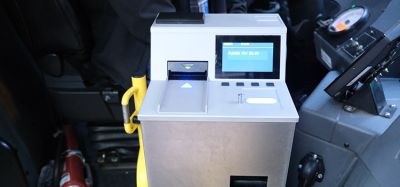Oyster confirmed as the ticket of choice for millions of London commuters
- Like
- Digg
- Del
- Tumblr
- VKontakte
- Buffer
- Love This
- Odnoklassniki
- Meneame
- Blogger
- Amazon
- Yahoo Mail
- Gmail
- AOL
- Newsvine
- HackerNews
- Evernote
- MySpace
- Mail.ru
- Viadeo
- Line
- Comments
- Yummly
- SMS
- Viber
- Telegram
- Subscribe
- Skype
- Facebook Messenger
- Kakao
- LiveJournal
- Yammer
- Edgar
- Fintel
- Mix
- Instapaper
- Copy Link
Posted: 8 February 2011 | Transport for London | No comments yet
More than two million journeys a week now made using Oyster pay as you go on London’s commuter rail services…


More than two million journeys a week now made using Oyster pay as you go on London’s commuter rail services.
Since Oyster pay as you go was extended to National Rail services in London a year ago, more than 80 million journeys have been made using the world’s most successful travel smartcard.
More than two million journeys are now being made each week using Oyster pay as you go on National Rail services in Greater London.
The figures, confirmed by Transport for London (TfL) and the Association of Train Operating Companies (ATOC) today, have risen from around 600,000 journeys per week since Oyster pay as you go was extended to all 350 National Rail stations in Greater London in January 2010.
Hundreds of thousands of passengers are now benefiting from the cheaper and simpler rail travel that Oyster pay as you go provides.
The roll-out doubled the number of stations where Oyster pay as you go was accepted, allowing it to be used on all National Rail, Tube, Docklands Light Railway (DLR), London Overground, bus and tram services, and Thames Clipper river services.
In the last 13 months, Oyster pay as you go customers have made over 80 million journeys on rail services.
The most popular new rail journeys for Oyster pay as you go users have been:
- Waterloo to Clapham Junction, Wimbledon, Putney and Richmond
- Victoria to Clapham Junction and East Croydon
On each of these routes more than 12,000 journeys per day are made using Oyster pay as you go.
Numbers are expected to continue rising.
Touch in and touch out
Oyster pay as you go saves passengers time as there is no need to queue to buy tickets and they can simply top up their card at any suitable ticket machine or online.
Train companies continue to look for ways to make Oyster easier to use.
To ensure that passengers are charged the correct amount and to avoid paying the maximum fare, they must always touch in and out at the start of every journey, using Oyster validators or gates at rail stations.
Boris Johnson, the Mayor of London, said: ‘Getting Oyster on National Rail has made a radical difference to people living in Outer London, many of who depend on overground rail to get around.
‘I am pleased that the train operating companies worked with us to introduce this and it is fantastic that so many people have taken advantage of being able to travel around London, hopping between Tube, bus, river or rail with just a swipe of their trusty Oyster card.’
Shashi Verma, TfL’s Director of Fares & Ticketing, said: ‘With Oyster you only need one ticket to travel on public transport across the Capital and with seven million cards in regular use it is the world’s most successful and popular travel smartcard.
‘It is great to see how quickly and easily commuters on National Rail services have switched to using Oyster pay as you go.
After only one year, more than two million journeys a week are being made on the commuter rail network using Oyster pay as you go and by doing so passengers are getting the best fares for themselves.
‘We will continue working with the train companies to boost the success of Oyster even further.’
Save money and time
David Mapp, ATOC Commercial Director, said: ‘The extension of Oyster pay as you go to National Rail has been a fantastic success.
‘The aim was to make public transport around the Capital easier and quicker for thousands of rail passengers every day.
‘An added bonus for many passengers is that they save money too.
‘It was a project which took huge amounts of joint work by train companies, TfL and DfT [Department for Transport], so the scale of its success 12 months on is great news for all concerned.’
The highest switch from National Rail paper tickets to Oyster has been at suburban stations such as East Croydon, Watford Junction, Twickenham, Romford, Kingston and Bromley South, where between 15,000 and 45,000 journeys are recorded each day using Oyster.
‘Smaller suburban stations are also recording high Oyster use, including Blackheath (14,000 journeys a day), Southall (12,000 journeys), Herne Hill (11,000 journeys), Rainham Essex (7,800 journeys), Alexandra Palace (6,600 journeys) and Sidcup (6,400 journeys).
Related topics
Ticketing & Payments
Related cities
London, United Kingdom
Related organisations
National Rail, Oyster, Transport for London (TfL)
Related people
Boris Johnson, David Mapp, Shashi Verma








